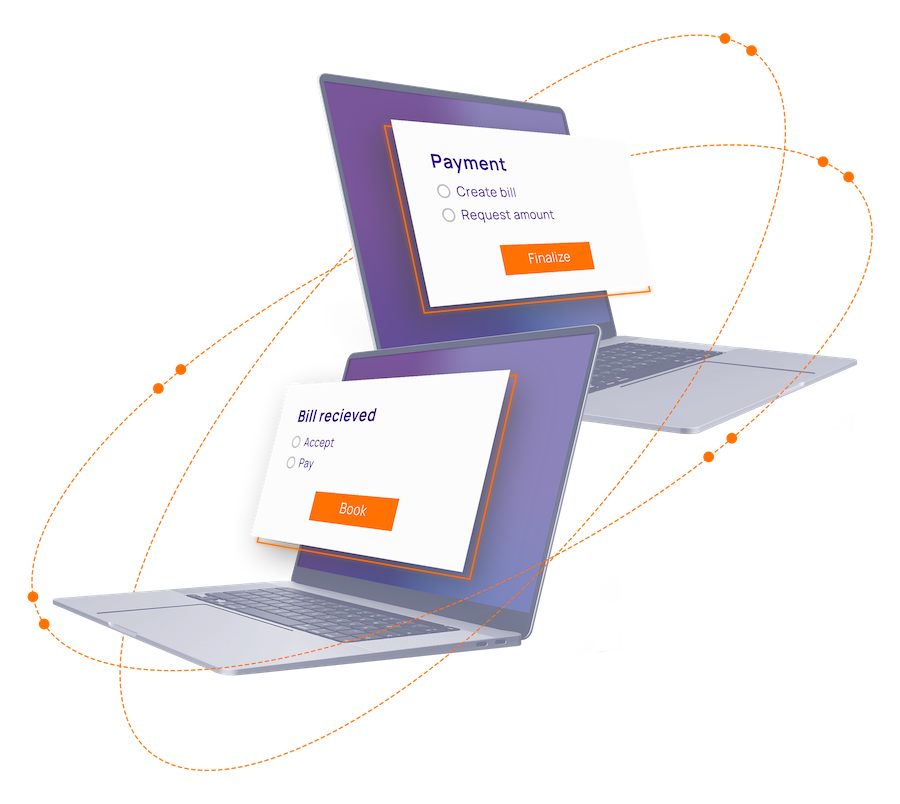Fully digital accounting
PAYCY for companies

Single point of truth

Reconciliation

Cost savings

Compliance

Automation

Sustainability
Questions & Answers about PAYCY
Request to Pay is a payment request sent by creditors via their main bank to a debtor's main bank. The recipient of the money is therefore asking the sender to settle an invoice. Instead of transferring the money themselves, senders only need to authorise the Request to Pay to trigger the payment.
A Request to Pay can be authorised in exactly the same way as a credit transfer. The procedures provided by the respective main bank remain available for this purpose. Companies that use PAYCY thus do not need to change anything in their processes. The only difference: you no longer authorise a credit transfer. Instead, you authorise the payment directly.
PAYCY ensures that the invoice and payment request are delivered. For this, the company sends its invoice to its main bank. PAYCY generates the Request to Pay from it and sends that to the customer's financial institution. If the latter authorises the payment, the money is transferred. In this respect, the platform works like a digital postal service that packs the invoice into a Request to Pay and delivers it.
No. Access is via their own main bank. It provides the channel for receiving invoices digitally. If the company works with an ERP system, the Request to Pay can also be generated directly together with the electronic invoice and transferred to the financial institution.
The invoices must be submitted in one of the common formats. These include, for example, ZUGFeRD in Germany or Factur-X in France. PAYCY also converts the different formats into the one required in each case, so that companies do not need to worry about this themselves.
Companies that send out invoices usually know their customers. PAYCY checks, for example via the customer's IBAN, whether the target bank is connected to the platform and delivers the Request to Pay. The more financial institutions join in, the more convenient it will be to send invoices electronically, because they will always go to the debtor’s main bank.
Many countries in the European Union are introducing electronic invoices on a mandatory basis. This has already happened in Italy, and France plans to follow soon. Electronic invoices are also to be introduced in Germany. This is stipulated by the coalition agreement (p. 132) between the current governing parties.
No. Request to Pay is a format adopted by the European Payments Council and used by all financial institutions in Europe (link). Request to Pay is part of the SEPA family. The full format is called SEPA Request to Pay and is described in the SRTP Scheme Rulebook.
PAYCY is a platform to which banks connect to send and receive Requests to Pay among themselves. In addition, PAYCY allows you to generate a Request to Pay from an electronic invoice. PAYCY provides the infrastructure for Request to Pay, similar to a road for vehicles or a rail for trains.
PAYCY links the invoice data transmitted in a Request to Pay with the actual payment on the bank account and thus eliminates the existing media discontinuity between billing and banking.
When a Request to Pay is received and the recipient authorises the payment, the transaction is carried out by the financial institution. In online banking or in the app, this transaction appears on the digital account statement as usual. What is new is that the invoice data is also stored there.
The invoice data can be read out or downloaded as a PDF. It would also be possible to search for invoices and see when they were paid. The bank account thus practically becomes a wallet that contains all the relevant data relating to invoices and payments.
